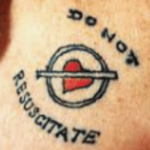
Author: Marcy Burnham, RN, AED365 Leader
In today’s fast-paced world, emergencies can happen at any time, often without warning. Preparation is key, and having the right tools at hand can mean the difference between life and death. One such essential tool is the Automated External Defibrillator (AED). However, in the face of the opioid crisis, it is equally important to consider the addition of naloxone to our emergency response kits. While AEDs are designed to address cardiac emergencies, naloxone specifically targets opioid overdoses. Having both tools available covers a broader range of potential emergencies, ensuring that responders are equipped to handle various life-threatening situations effectively.
The opioid crisis is a major public health issue. According to the CDC, nearly 500,000 people died from opioid overdoses between 1999 and 2019, with numbers continuing to rise. Just like cardiac arrest, opioid overdoses are time-sensitive emergencies. When someone experiences a cardiac event, immediate defibrillation with an AED can be lifesaving. Similarly, in the case of an opioid overdose, administering naloxone quickly can restore breathing. Having both tools readily available ensures that responders can act immediately, regardless of the nature of the emergency. By pairing naloxone with AEDs, we increase the accessibility of this life-saving drug. AEDs are commonly found in public spaces such as schools, airports, and workplaces.
Including naloxone with AEDs can encourage more comprehensive emergency response training. Many organizations already offer CPR and AED training; incorporating naloxone administration can provide a well-rounded approach to emergency care. This training can help people feel more confident and willing to act during an overdose situation. The presence of both AEDs and naloxone can enhance community confidence and a sense of safety. Knowing that these tools are available and that individuals are trained to use them can provide peace of mind, encouraging community members to feel more secure in public spaces.
Incorporating naloxone into AED kits is a logical and life-saving step in our approach to emergency preparedness. As we face the dual challenges of cardiac events and opioid overdoses, equipping our public spaces with both AEDs and naloxone ensures that we are prepared to respond effectively to a wide range of emergencies. By doing so, we can save lives, support public health initiatives, and foster a safer, more prepared community.
Office: (205) 417-4711
Email: info@aed365.com






